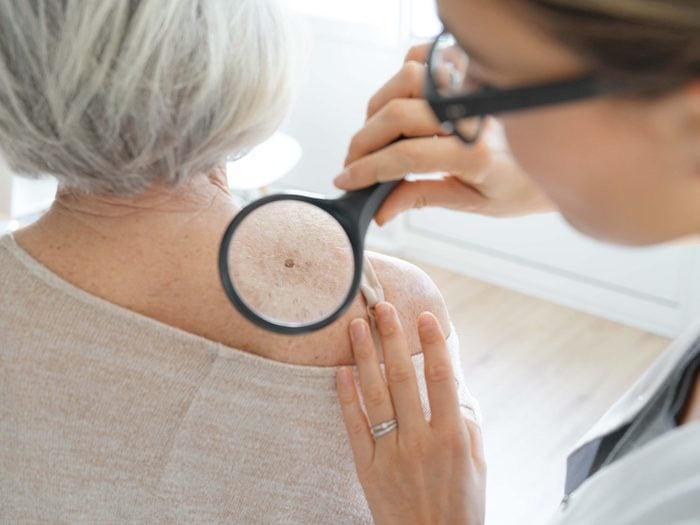
Early detection of skin cancer symptoms is key
Skin cancer is on the rise, now accounting for one in every three cancers diagnosed worldwide.
But how can that be, when we are seeing more safe-sun campaigns and public education around skin cancer?
It’s mainly down to better strategies for detecting skin cancer symptoms and the fact that we are living longer than ever. “The longer you live, the higher your chances are of eventually developing a skin cancer,” says Dr. Deborah S. Sarnoff, a New York City dermatologist and president of the Skin Cancer Foundation. The good news is that when caught early, it’s highly treatable.
Skin cancer is typically grouped into two categories: non-melanoma and malignant melanoma. Non-melanoma types, which include basal cell carcinoma (BCC) and squamous cell carcinoma (SCC), are the most common and account for the vast majority of cases. The main risk factor is cumulative ultraviolet (UV) exposure, so skin cancer can appear as we age, typically on the areas that are most often exposed to the sun.
“That includes the face, ears, scalp and neck,” says Dr. Clare Tait, a dermatologist based in Perth, Australia—the country with the world’s highest rate of melanoma, according to World Cancer Research Fund International.
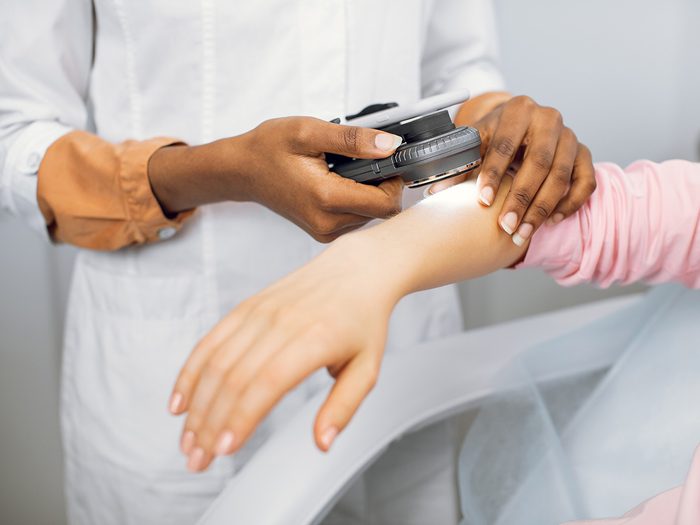
Innovative new treatments
Melanoma accounts for just one percent of skin cancers but it is by far the deadliest. It, too, is caused by UV exposure—and if you’ve had five or more sunburns, your risk is doubled—but it can also be the result of an inherited gene mutation. Melanoma usually shows up on the chest, back, lower legs, head and neck, but it can also occur on areas of the body that are rarely exposed to the sun, such as the soles of your feet or under your nails.
It’s so dangerous because it can spread deeper into the skin or to other organs, so treatment is more difficult.
But there’s good news: An mRNA vaccine clinical trial by the pharmaceutical companies Moderna and Merck has just been shown to be an effective treatment for late-stage melanoma. The results, announced in December 2022, showed that when a personalized mRNA vaccine is used in combination with immunotherapy following surgical removal of the skin cancer, the risk of recurrence or death in patients with stage 3 or stage 4 melanoma was reduced by 44 percent compared with immunotherapy and surgery alone.
The vaccines, the subject of decades of study for personalized cancer treatments, work by providing a section of genetic code—like instructions—that tell our cells how to make a specific spike protein that the immune system learns to attack. “The vaccine essentially trains the body’s immune system to recognize and respond to mutations in the DNA specific to the patient’s tumour,” explains Sarnoff. A larger trial is planned for this year.
“It’s very exciting and a great breakthrough,” she says, because late-stage melanoma—when the cancer has spread to other organs—has too often been a death sentence. If approved, this vaccine could be another option for patients with late-stage melanoma, which is currently treated with chemotherapy, radiation, immunotherapy and targeted drug therapy.
Discover more exciting breakthroughs in the fight against cancer.
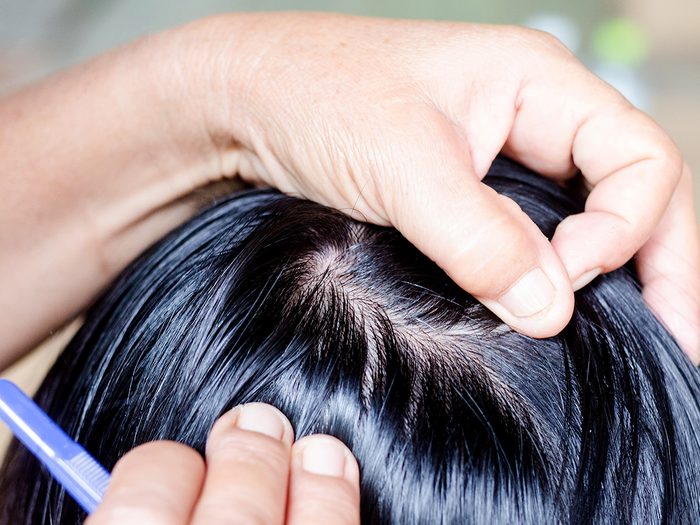
Check for skin cancer symptoms every three months
Prevention and early detection of skin cancer symptoms remain your best defence. “With early detection, melanoma that’s still limited to the epidermis is virtually 100 percent curable,” says Sarnoff. That’s why it’s important that you get to know your skin and keep an eye on existing moles and any skin changes.
Aim to do that every three months, says Anne Cust, chair of Cancer Council Australia’s Skin Cancer Committee. “Consider taking photos of spots you are concerned about so that you can keep tabs on them.”
Ask a friend or your partner to check for skin cancer symptoms in the areas that you might not be able to see, like the scalp, back of the neck, buttocks and lower back, advises Tait. Use a mirror and good light. If you spot anything of concern, see a doctor. It’s also a good idea to have an annual check-up with a dermatologist or family doctor.
Here are the skin cancer symptoms to watch out for.

Skin Cancer Symptoms
Changes
Dermatologists have long recommended looking for moles that have an irregular border or variations in colour, or are large (more than six millimetres, roughly the size of the eraser on the end of a pencil).
Sarnoff suggests this simple rule of thumb: “Anything on your skin that’s new, changing or unusual should be checked out,” she advises.
Your skin can tell you a lot about your health. Here are more skin changes worth discussing with your doctor.
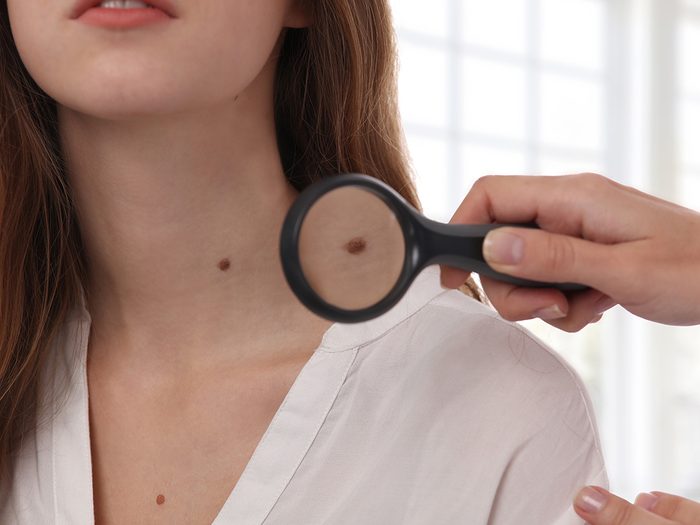
New moles or abnormalities
Watch for new spots, freckles or moles, particularly if you’re older than 25. It’s common for adults to have anywhere from 10 to 40 moles; more than 50 is an increased risk factor for melanoma. Small bumps that are red, pink or pearly in colour could be BCC, especially if they appear on skin that gets the most sun exposure, such as the face, neck, scalp, hands and shoulders.
Find out the best foods to eat for healthy, glowing skin.
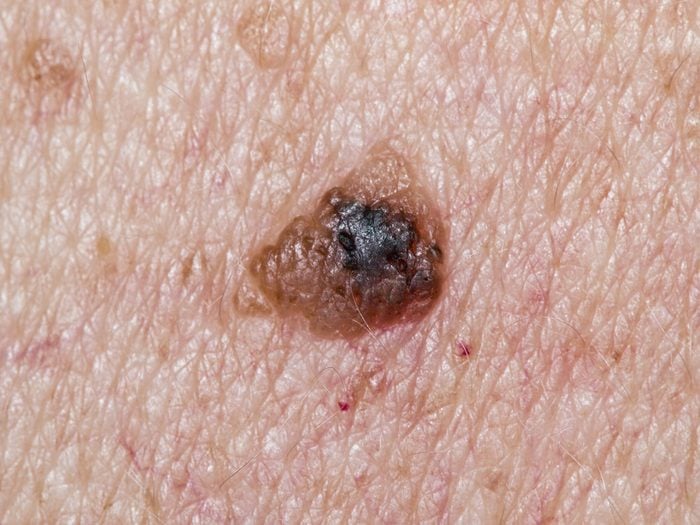
A freckle or a mole that’s changed
An existing mole or freckle that’s changed should be looked at by a doctor, says Tait. “It might be a change in shape, colour or size, or maybe it becomes painful or itchy,” she says. “Of course, all of those things can happen without it being a skin cancer, but it should be an alarm bell to get it checked.”
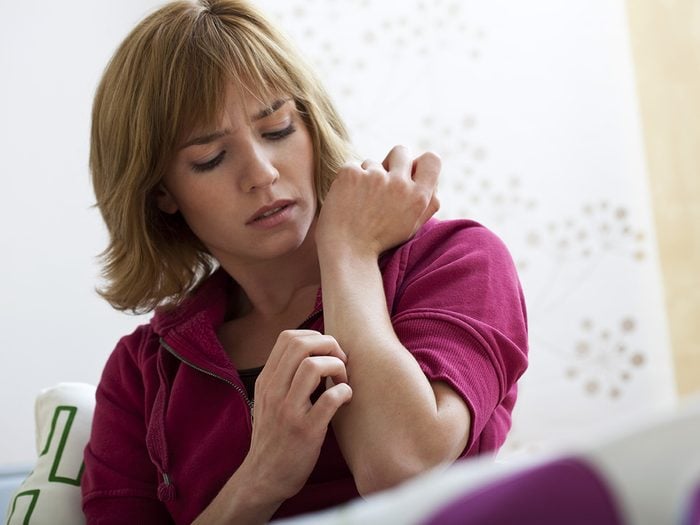
A dry, scaly patch or a sore that won’t heal
“If you have a spot that’s chronically itching and scabbing, and keeps popping up at the same site, that’s a red flag,” says Sarnoff. And pay close attention if you have an area that bleeds repeatedly without trauma, as this could be a sign of BCC, says Tait. If a sore or unusual spot hasn’t resolved in three to four weeks, seek medical attention.
Here are six strange skin rashes, decoded.
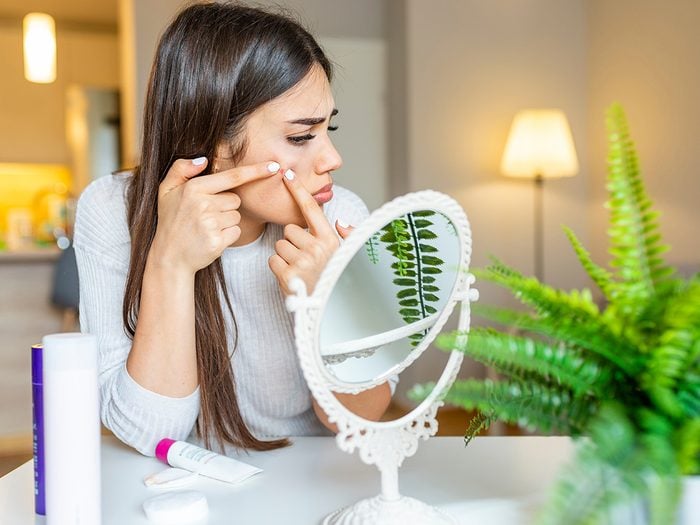
A pimple that won’t go away
“The life of a pimple is a few days up to a maximum of three weeks,” says Sarnoff. If you have what looks like a pimple, but it isn’t going away, it could be BCC or SCC.
Check out 20 more symptoms you should never ignore.
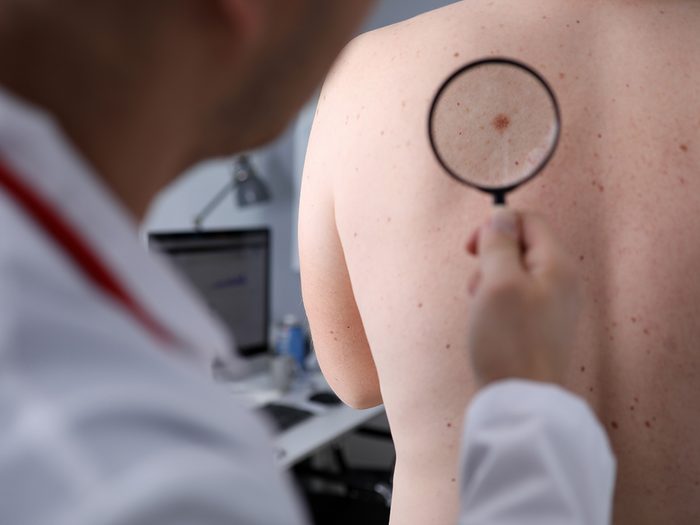
Anything different from the rest
Healthy freckles and moles tend to look similar. “If something looks like it’s an outlier, you should get it checked,” says Sarnoff. It might be a bit bigger than the others, darker or perhaps raised while the others are flat. When something looks off, trust your instincts, she says.
Here’s why you might want to switch to an oxybenzone-free sunscreen.
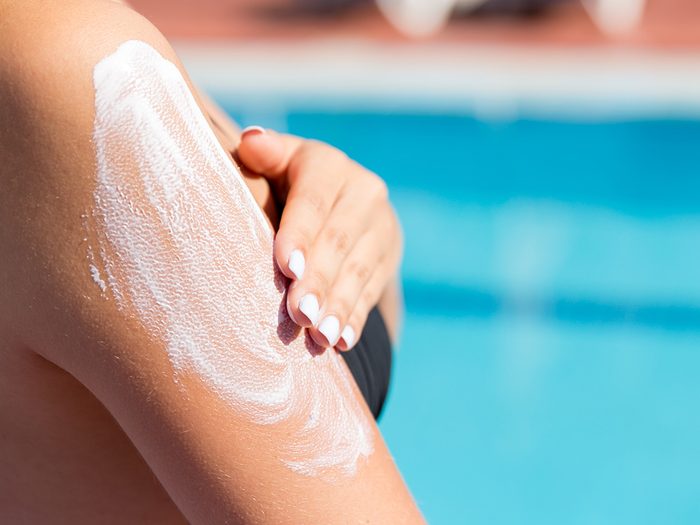
Reducing your skin cancer risk
“Sun protection is most important when the UV index reaches three or above,” says Tait. In much of Europe and Canada that’s typically between 11 a.m. and 3 p.m. during the summer. You can check the daily UV index with most weather apps. You’ll still get enough vitamin D, says Cust. “Most people maintain adequate vitamin D levels just by spending a few minutes outdoors on most days.”
Fair-skinned people with blue eyes and blonde hair, and those who have a family history of melanoma or already have a lot of moles, are at higher risk than others.
If that’s you, take extra precautions outdoors, says Tait. Wear clothing that covers you up, a broad-spectrum sunscreen rated SPF30 or higher, a hat and sunglasses. And be a shade seeker!
Next, here are 10 sunscreen tips you should follow to protect your skin.